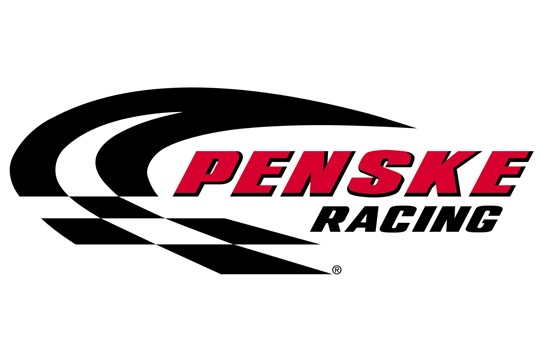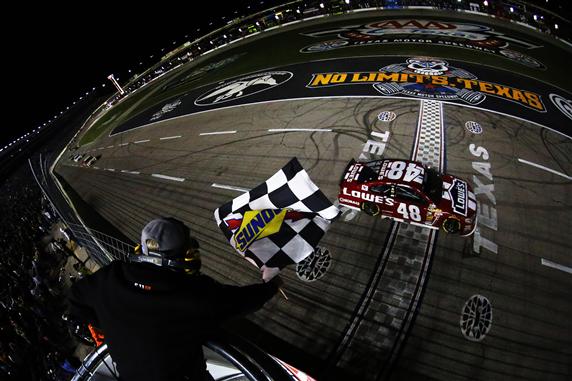NASCAR’s Senior Vice President of Competition and Race Development Robin Pemberton made some interesting comments following the AAA Texas 500 at Texas Motor Speedway on Sunday evening. Pemberton was talking about Brad Keselowski’s contact with Jeff Gordon and stated, “I think it was hard racing and this is a contact sport.”
Contact, that’s what NASCAR was built on. Since the beginning of the sport drivers have always had discussions about who was right and who was wrong in certain situations and have argued over real estate. What happened Sunday night is nothing different than what happens on most Saturday night’s at a short track race. Race fans have seen it plenty of times.
But what has changed in NASCAR is the mentality and the kind of contact it takes to send someone into a fit of rage. Since NASCAR began in 1949 there have been plenty of stories about accidents that involved contact. Most of them have come at short tracks but not all of them. One of the prime examples came in the 1979 Daytona 500 when two hardnosed drivers crashed while racing for the lead on the final lap. Both Cale Yarborough and Donnie Allison were beating each other’s doors in, down the entire long back straightaway at Daytona International Speedway. When it came to winning the Daytona 500, there was no limit on what a driver would do. Everything was fair game. Both drivers proved that and while both of them crashed on the back straightaway eventually leading to Richard Petty winning his sixth Daytona 500, neither driver complained about racing each other too hard. While a fight did break out, it was between Cale Yarborough and Donnie’s brother Bobby from an earlier altercation.
The same can be said for a classic moment that came at Darlington Raceway in the 2003 season. That’s when young driver Kurt Busch and veteran Ricky Craven battled it out in the closing stages of the 2003 Carolina Dodge Dealers 400. Busch had a strong car all day long and led in the closing stages until Craven’s Pontiac Grand Prix closed in quickly.
Craven, who only had one career NASCAR Winston Cup Series victory prior to the race, was going to give it his all and win at all costs. Craven was once considered as one of NASCAR’s best young drivers and many thought he would be NASCAR’s next big star. However, a slew of injuries put Craven’s career on hold. After losing his ride at Hendrick Motorsports following another injury plagued 1998 season, Craven bounced around between low level Winston Cup Series teams before the Newburgh, Maine native caught on with Cal Wells’ PPI Motorsports team with sponsor Tide to start the 2001 season. Craven won his first career race at Martinsville in 2001 and had some success driving for the single car operation. He had his best season in 2002 where he finished 15th in points for the team and had seven top-ten finishes. While 2002 was a great year, another win just seemed out of his grasp. Craven was now at the toughest track on the circuit chasing down one of NASCAR’s best race teams and one of its hottest young stars.
As Craven closed in Busch could do nothing but drive the way he knew how; hard. Craven, for reasons mentioned earlier, needed no incentive to race hard. The two did just that. Craven caught Busch with just three laps to go and from there one of the greatest battles in NASCAR history ensued. They slammed each other as Craven got on the inside of Busch and made contact, knocking Busch into the wall with just two laps to go. Busch continued and went chasing after Craven. Busch then bumped Craven and slowed him down enough to get around him. Craven then again went after Busch. Craven would get to the inside of Busch coming to the checkered flag and the two would slam each other really hard and ride each other all the way to the start-finish line. They did everything but wreck each other and in the end Craven had won his second career NASCAR Sprint Cup Series race in dramatic fashion.
Both cars were mangled like they had been in a demolition derby, not a NASCAR race. One would think that a driver would be upset at this display of racing. Instead, both Busch and Craven got out of their cars smiling because they knew they did all they could to prevent each other from winning the race. Busch told Fox’s Steve Byrnes that was racing, “the way it should be, hard fought racing.” Craven did the same and the two still talk about the ending of the race with respect and dignity.
Fast forward 11 years to the 2014 season, and my how things have changed. Keselowski’s contact with Gordon wasn’t nearly as significant as the contact that Busch and Craven had or the contact that Yarborough and Allison had at Daytona years earlier. Yet the outcome was extremely different.
In other forms of racing contact hasn’t been widely accepted as normal like it has been in NASCAR. NASCAR legend Dale Earnhardt made a living off of making contact with someone and speeding ahead to victory. Sure, some fans and drivers didn’t like it, but it was still an accepted style of racing. Earnhardt ran hard and raced to win at all costs and it paid off for him immensely, as the Intimidator won 76 career NASCAR Cup races and seven championships.
Contact has always been a part of stock car racing. Pemberton is right. However lately, fans and drivers have had issue with the slightest contact. Whether it’s a different era of the sport where cars and parts cost more than they ever have or whether the style has racing has changed over the last 10 years, one thing is for sure. Something has changed.
Back in August Sprint Cup Series drivers Ryan Newman and Jimmie Johnson got into an altercation after the Pure Michigan 400 at Michigan International Speedway. Johnson and Newman were running each other hard for the seventh position in the closing stages of the event and Johnson made slight contact with Newman coming off of turn two. Newman was not happy with the contact and wanted to tell Johnson about it. Johnson made a tire rub on Newman’s left side of his racecar, leaving many fans wondering if “rubbing” actually still is racing like the old saying goes.
Fast forward to Sunday’s incident between Keselowski and Gordon and while the contact between the two eventually left Gordon with a blown left rear tire, the contact itself wasn’t anything to be mad about. It was good, hard racing in the closing stages of a race where Keselowski had to win to continue his quest for a second championship. Keselowski didn’t wreck Gordon, like we’ve seen drivers do in the past.
The Senior Vice President of Competition of NASCAR was right. NASCAR is a contact sport, let’s not forget that.








Sure Pembermouth. “Boys have it.” And we will collect the fines after we have made you race like this.
No fines, no penalties. BK won’t finish Phx on the lead lap, if at all after the right guys get him.